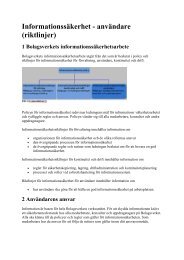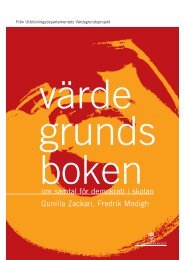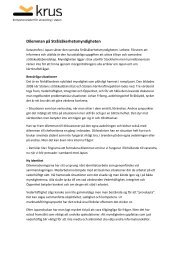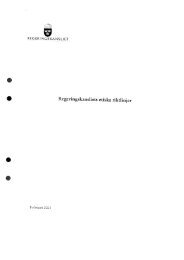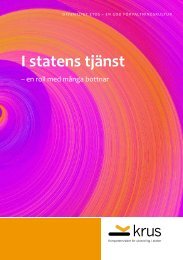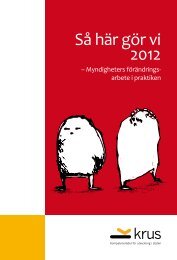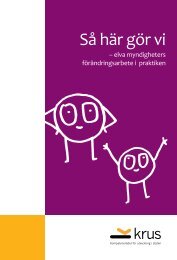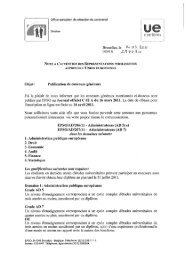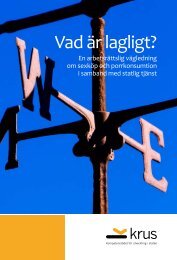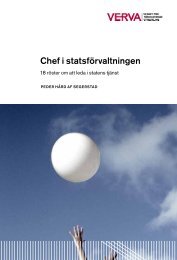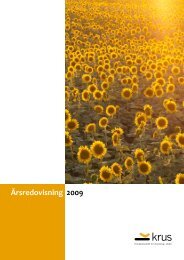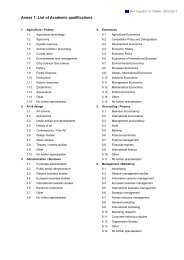Dialogkompetens i skolans vardag - Publikationer - LTU - Luleå ...
Dialogkompetens i skolans vardag - Publikationer - LTU - Luleå ...
Dialogkompetens i skolans vardag - Publikationer - LTU - Luleå ...
You also want an ePaper? Increase the reach of your titles
YUMPU automatically turns print PDFs into web optimized ePapers that Google loves.
Dialogue – community of practice – school improvement<br />
Dialogue competence means being able to talk and listen, which may seem to be<br />
self-evident in communicative contexts (Wilhelmsson, 1998). In the present studies<br />
this turned out to be somewhat more complicated. In order to learn together<br />
with and from one another while at the same time developing new shared knowledge,<br />
each individual in the conversation was required to possess the ability to<br />
behave with closeness and distance to her/his own and her/his colleague’s perspective.<br />
In the following text the division below will be put in relation to the results<br />
of the thesis:<br />
Self<br />
Others<br />
Closeness talk (write) listen (read)<br />
Distance critical self-reflection critical reflection<br />
on others’ views<br />
Figure 6. Developed model of dialogue competence (Wilhelmsson & Döös, 2005, p. 18)<br />
The aspects that the teachers had to make an effort to develop, concerned assuming<br />
the role of the other, being able to listen actively in order to contribute critical<br />
reflections on what had been said or written (termed ‘response’ in this study). Aspects<br />
that many pupils lacked concerned their own critical self-reflection and an<br />
active role of listener, where the quality of listening was also dependent on conditions<br />
in the physical environment. Not being able to verbalise ones needs means<br />
not having a distance to one’s own hearing impairment (Study I). When experts<br />
(teachers/audio technician) in one’s surroundings take on the task of providing<br />
‘the best solution’ from their own perspective, the individual’s distancing will be<br />
made worse.<br />
Being close to one’s own perspectives and having a distance to those of others<br />
implies ability for differentiation, for making distinctions. Having a distance to<br />
one’s own perspectives and closeness to those of others implies ability for integration,<br />
uniting and incorporating. In the ideal dialogue, all participants offer their<br />
differentiated and integrated abilities. Contributing to integration that is, building<br />
on others’ statements turned out not to be self-evident, and this problem was most<br />
obvious in the web dialogue. A parallel difficulty was discussed there, namely the<br />
pupils’ ability to contribute to integration. Everybody wanted to have their say<br />
without building on a classmate’s narrative (Study III); this phenomenon is in no<br />
way specific to hard-of-hearing pupils. A facilitator or a teacher in the classroom<br />
99



